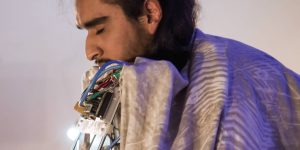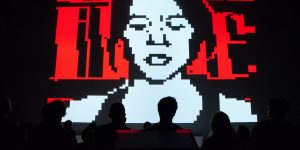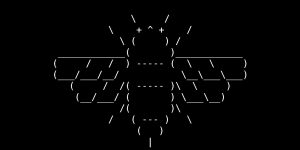Exhibitions, Projects

M0T3TU5
Alessandro Capozzo (IT)
M0T3TU5 is a project placed at the intersection of generative art, artificial intelligence and data visualization. It is based on texts generated by a neural network trained with some of the fundamental books of western scientific thought (Dialogo sopra i massimi sistemi by Galileo and Opticks by Newton).

IC-Decoder
Wesley Lee Yang (BR)
For this year’s exhibitions graphic design, we not only wanted to develop attractive aesthetics but also to provide an appealing visual code that can be decoded in order to transmit information. It is with this in mind that the IC-Decoder was created: a ludic exploration of decoding potential information from visual patterns.

KATHRIN STUMREICH hosted by ARS ELECTRONICA
Kathrin Stumreich (AT)
In the scope of this year’s Ars Electronica Festival 2019, Bildraum 07 in Vienna presents current works by Kathrin Stumreich. The artist gives insights into her sound research, in which she examines order and code, movement choreography and complex robotics, as well as coincidence and chaos as material properties.

Arm Existence2019
Atsuhito Sekiguchi (JP), Isato Kataoka (JP)
We usually write and draw pictures without doubting the length of our arms. If someone suddenly grabs your arms and they become immobile, it also feels like putting an arm in the mud. If you cannot confirm the information by eye, you will only feel the outside world from your own body reaction.

ORF TELETEXT meets art
Nadine Arbeiter (DE), Cordula Ditz (DE), Daniel Egg (AT), Dan Farrimond (UK), Juha van Ingen (FI), Joey Holder (UK), Kathrin Günter (DE), Raquel Meyers (ES), Matthias Moos (CH), Niccolò Moronato (IT), Jarkko Räsänen (FI), Seppo Renvall (FI) and UBERMORGEN (AT/CH/USA)
The videotext exhibition ORF TELETEXT meets art will be shown at the Ars Electronica Center's Deep Space 8K. It is rare to have the opportunity to experience teletext art on 16 by 9 meters!

Nothing wild in particular
Jeremie Nuel (FR)
Consciousness, memory, reality and identity are regular themes in Philip K. Dick’s books. These concepts have fed into AI research since the seventies. This work uses Andrej Karpathy’s neural network, known as “recurrent,” to train a computer program, using as source a text or a corpus. Once trained, the code writes, character by character, a new text. The corpus that feeds the neuronal network shortens Philip K. Dick’s work (52 books). As a mirrored entity, strange and undisciplined, the computer program tries to write, at every iteration, step by step, an often-absurd story, and sometimes, a poetic one.


